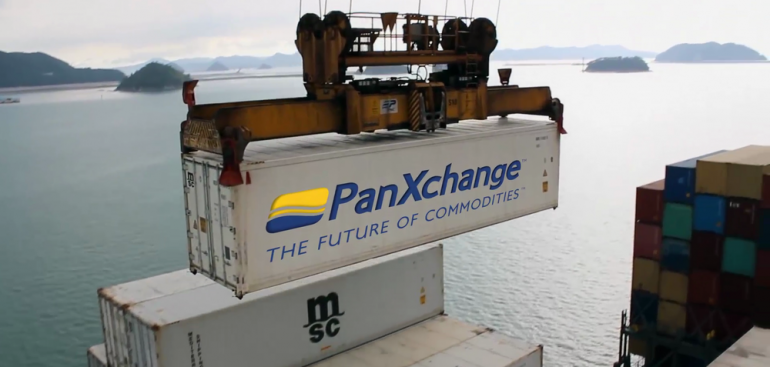Latest
The Commodities Disruptor
Originally published at Galvanize.
It was 3 a.m., and the warm Kenyan air smelled of jet fuel. Julie Lerner had just completed a 36-hour journey and stepped onto the runway at Jomo Kenyatta International Airport in Nairobi, Kenya. Her first time in Africa. A few days before her trip, a massive fire had erupted in the airport’s main terminal. The fire made headlines worldwide because the day it broke out happened to mark the 15th anniversary of al-Qaeda attacks on U.S. embassies in Kenya and Tanzania, and officials were concerned the incident might be related. Lerner heard the news from her home in Denver; but when the time came, she boarded the flight to Nairobi anyway. Now, in the middle of the night, as she approached the makeshift customs tent that had been set up next to the ashes of the airport, she thought to herself, what the fuck am I doing here?
Lerner had traveled to Africa to kick the tires on her plan to revolutionize the way physical commodities are traded. Simply put, anything that comes out of the ground—corn, wheat, beans, crude oil, iron ore, etc.—is bought and sold at least once before being processed and passed on to the consumer. In the mid 1990s, as a trader at Cargill, Inc., the Goldman Sachs of commodities trading, Lerner got an up-close view of the way the system works. What she saw was a lot of inefficiency: A single trader juggling hundreds of calls a day from multiple clients on multiple phones. “It’s so unbelievably antiquated,” Lerner says. “You’re dealing with guys that have been doing it the same way since the invention of the phone.”
The proverbial light bulb above Lerner’s head flicked on. She envisioned a computer software platform that would simplify the complex world of commodities trading. No more calling a trader and waiting for him to juggle his way to a response. Instead, prices would be listed on a website and displayed in real time. “The reality is that there can be up to a dozen different variables to negotiate before one can say yay or nay to a trade, and all of them impact the final price,” Lerner says. “People needed the ability to negotiate every field.” What’s more, to help keep the big firms from having too much leverage over the little guys, she’d keep prospective buyers and sellers digitally anonymous to ensure that trades were focused solely on the terms of the deal. “If you’re small or new, you’re vulnerable,” she says. “You have no negotiation power.”
The idea was to start with world sugar, a commodity Lerner knew well from her Cargill days. She floated the concept by a handful of farmers and food processors. The response was almost universal: We like it, but we’re not sure we need it. “It was too early for our client base,” she says. “The point of pain wasn’t high enough.” But Lerner realized the concept didn’t just work for sugar, it worked for other commodities like coffee and grains and beans. “It’s not a sexy business if you just do sugar,” she says. But a platform that spanned an entire industry? One that was both commodity and geography agnostic? Now that, she thought, that could work.
She refined the process and looked for markets that were in greater need. She found a few investors and began to lean on a small group of industry advisors. Bill Templer, a veteran financial services executive and managing director for Faventus Derivatives Consulting, had observed the same inefficiencies as Lerner and thought she was onto something. Templer had already witnessed a similar shift in the financial markets. Trading floors that were once flooded with white collar dudes on phones disappeared as the exchanges went digital, improving transparency and efficiency. “Commodities will inevitably go the same way,” Templer says. “It is a matter of when, not if.”
Fast forward to the summer of 2013, and Lerner found herself standing on that tarmac in Nairobi. Aside from the smoldering terminal and her rundown hotel room, the trip was a success. “Africa needed it,” Lerner says. “I don’t know if people consider an entire country proof of concept, but we did.” Lerner returned to Kenya a year later with the software for a pilot launch.
Peter Ngeno, operations director for Timex Grains Services, was one of the early adopters in Kenya. Ngeno found Lerner’s PanXchange platform to be a valuable way to link to the local buyer’s market. “All large customers I was targeting had cartel-like briefcase gate keepers who are known inside the organizations,” Ngeno says. “If one fails to utilize this cartel your consignment will be rejected until you have no option but to allow them to deliver on your behalf. These ‘brokers’ charged a fee and this increased my selling costs significantly.”
In addition to helping decrease costs and connect him to reputable buyers, Ngeno says PanXchange made price discovery much easier. Prior to signing up, he had to make several calls to figure out the current market price for any given commodity. With PanXchange he could find that information with the tap of a button on his smartphone. Only problem now, Ngeno says, is that more millers haven’t yet signed up, which would give him more options.
After a successful year of growth in Kenya, PanXchange now includes a dozen full- and part-time employees. This summer, from their office in the Denver campus of Galvanize, which provides a robust ecosystem for young companies, PanXchange expanded to the feed grains market in the United States; two months in, business has already doubled. In early November, Lerner traveled to Uganda to launch a second office in Africa. She’s also working with the United Nations’ World Food Programme, the world’s largest humanitarian organization addressing the problem of hunger and promoting food security. Still, the challenge remains convincing those who work in an industry that’s historically hesitant to change to adopt the future.
“PanXchange is very disruptive,” says Lerner, noting that younger traders have been quicker to embrace the idea of a digital trading platform. “Brokers call me the devil incarnate; a lot of the older guys perceive it as me ruining their legacy. … There are very good brokers and they do have a legacy, I’m not negating what they’ve done in their career. Part of what we do is evolutionary.”
But evolution is a slow process. There are still times Lerner wonders to herself what the hell she’s doing. She keeps going, however, because she says she’s never met a trader who doesn’t like the platform. “Every single person” Lerner says, “Says, ‘wow, I’ve never seen anything like this.’ It’s just a matter of convincing them. With margins in this business at an all-time low, if I can explain to a guy how the Cargills of the world trade and if I can help him get more commodity for the money—then I’ve done something good.”


